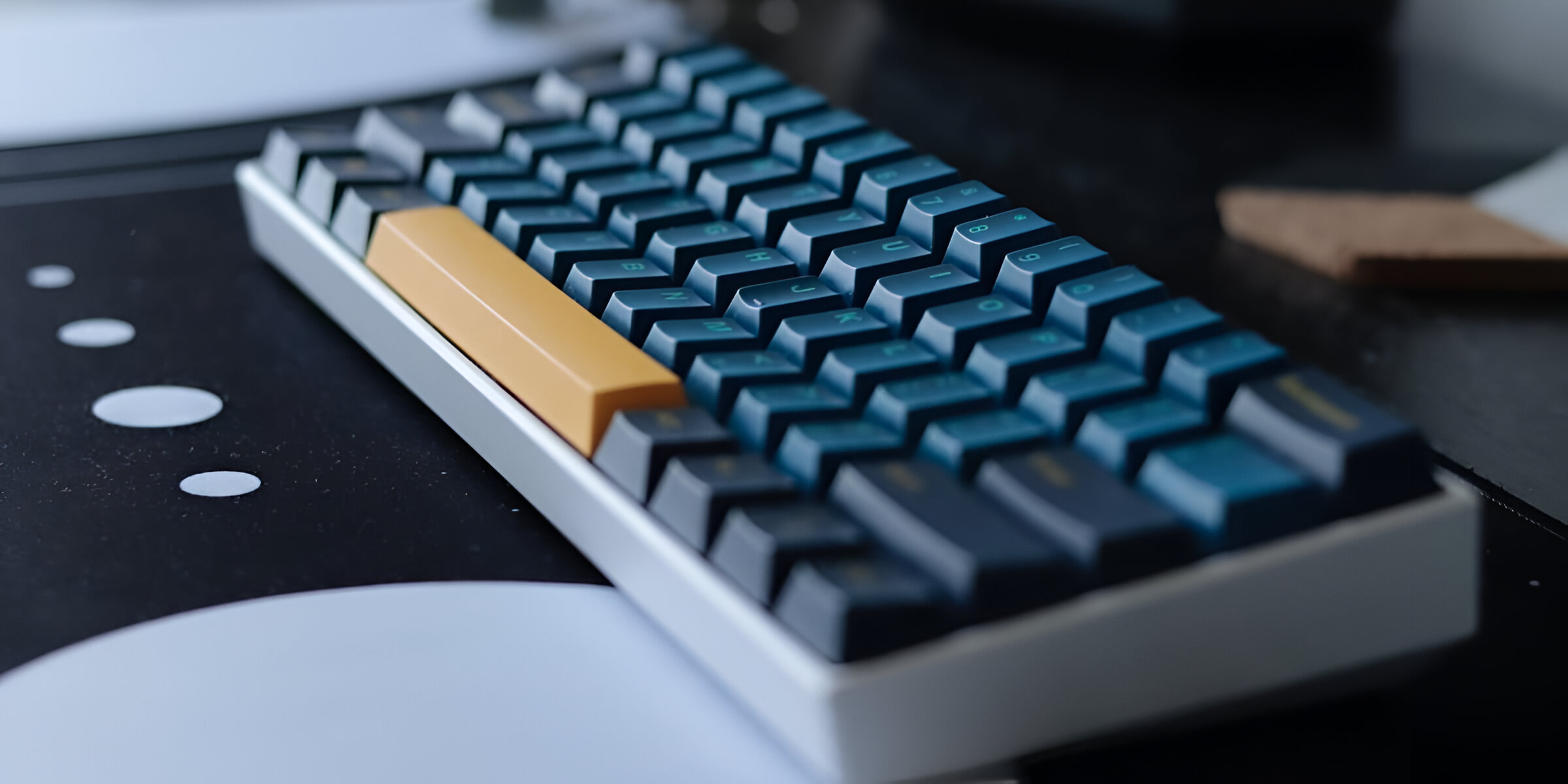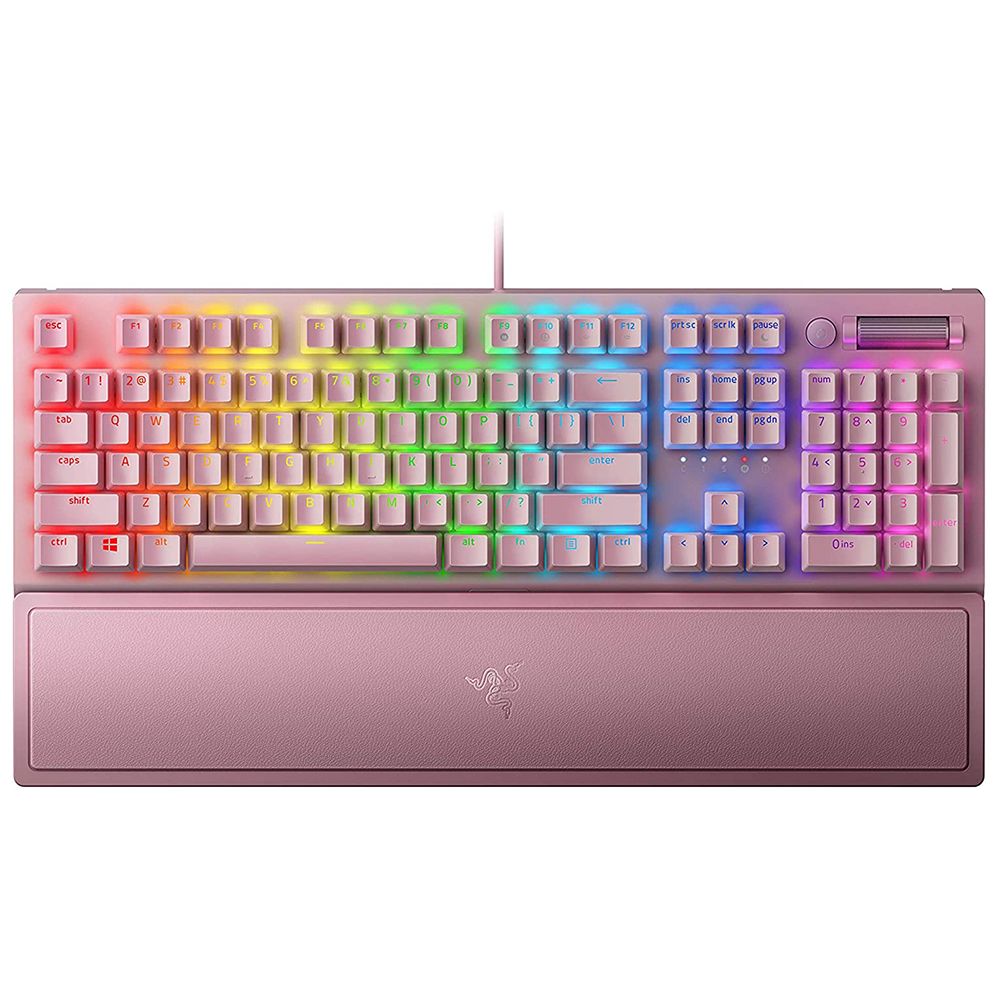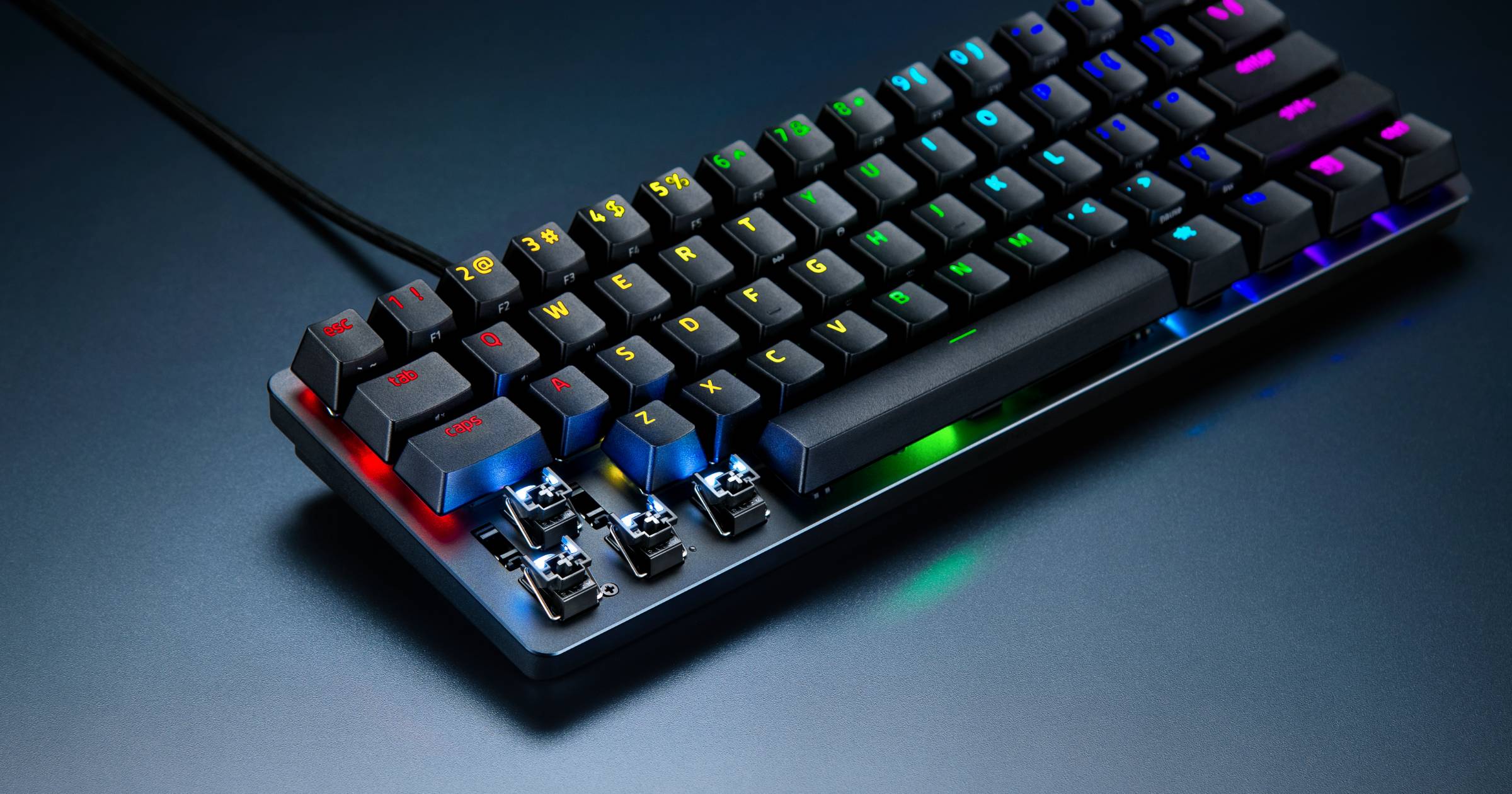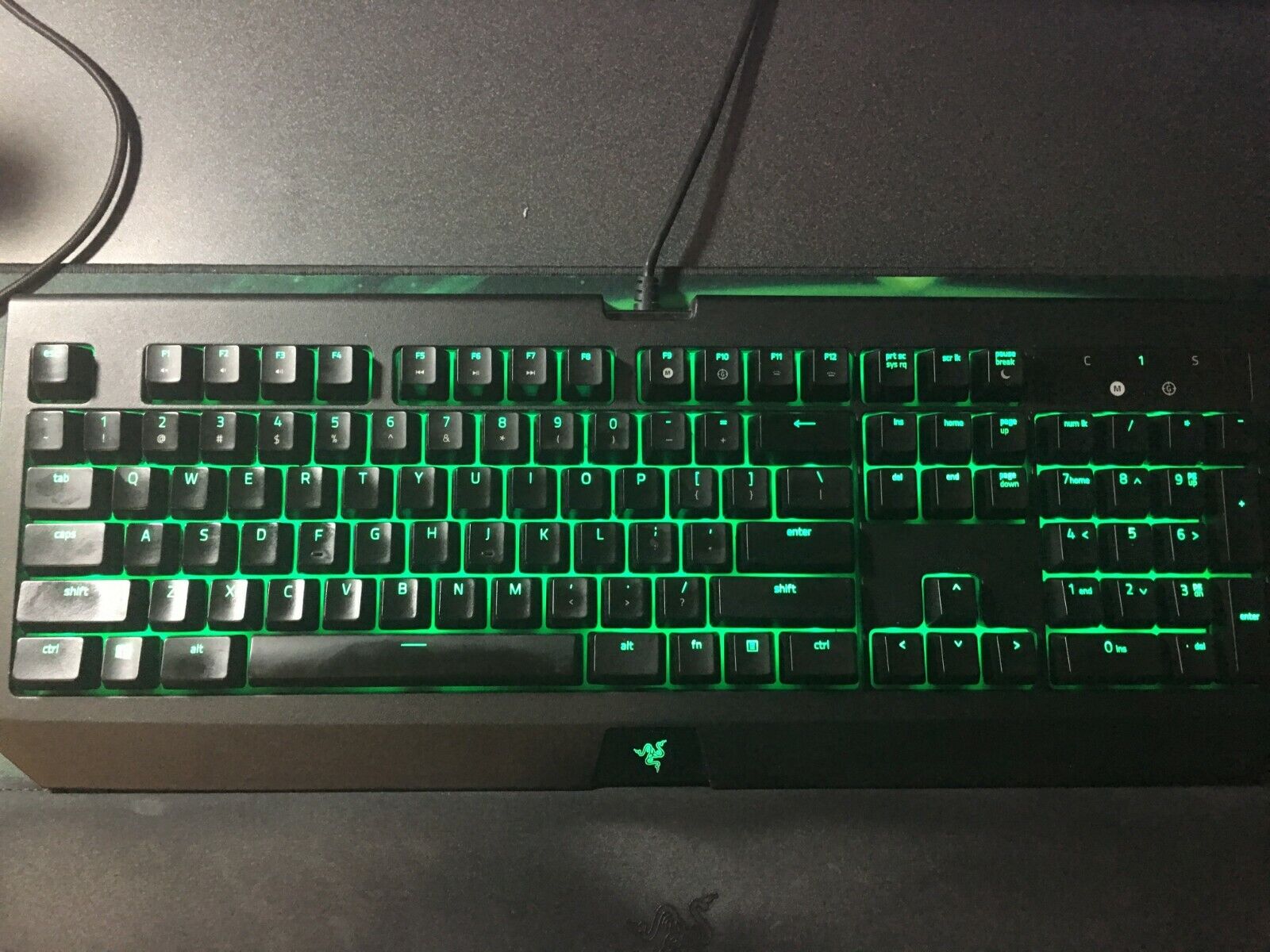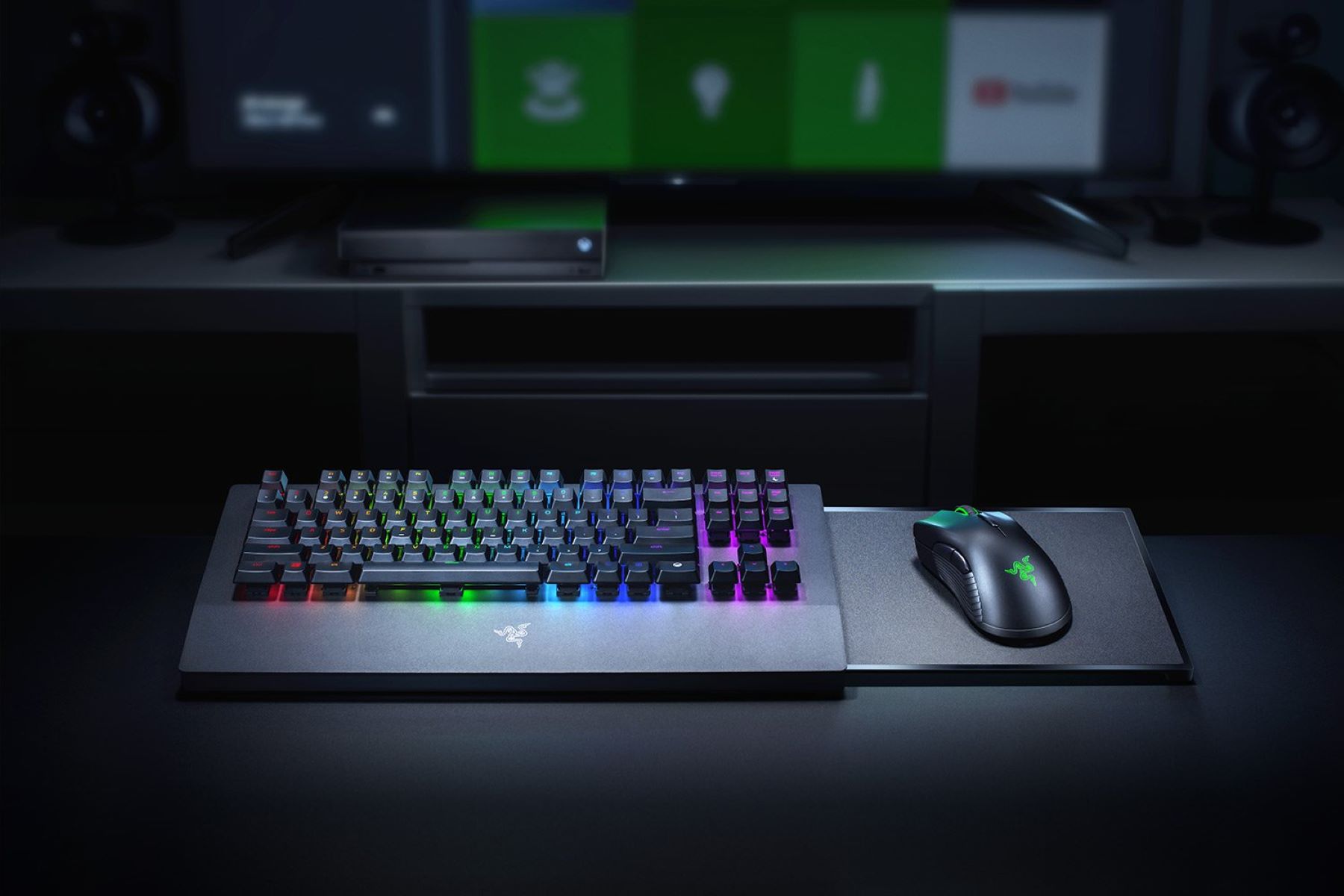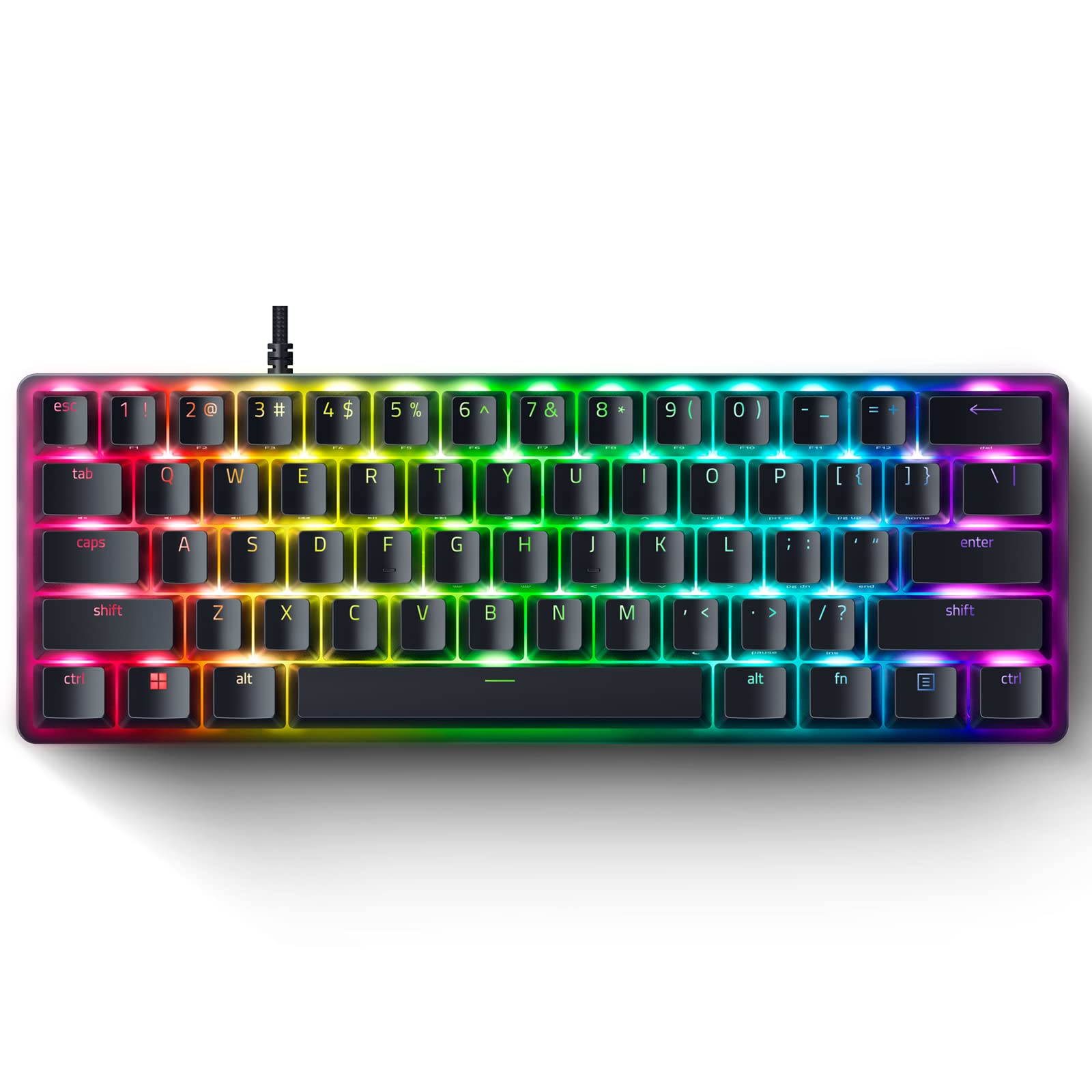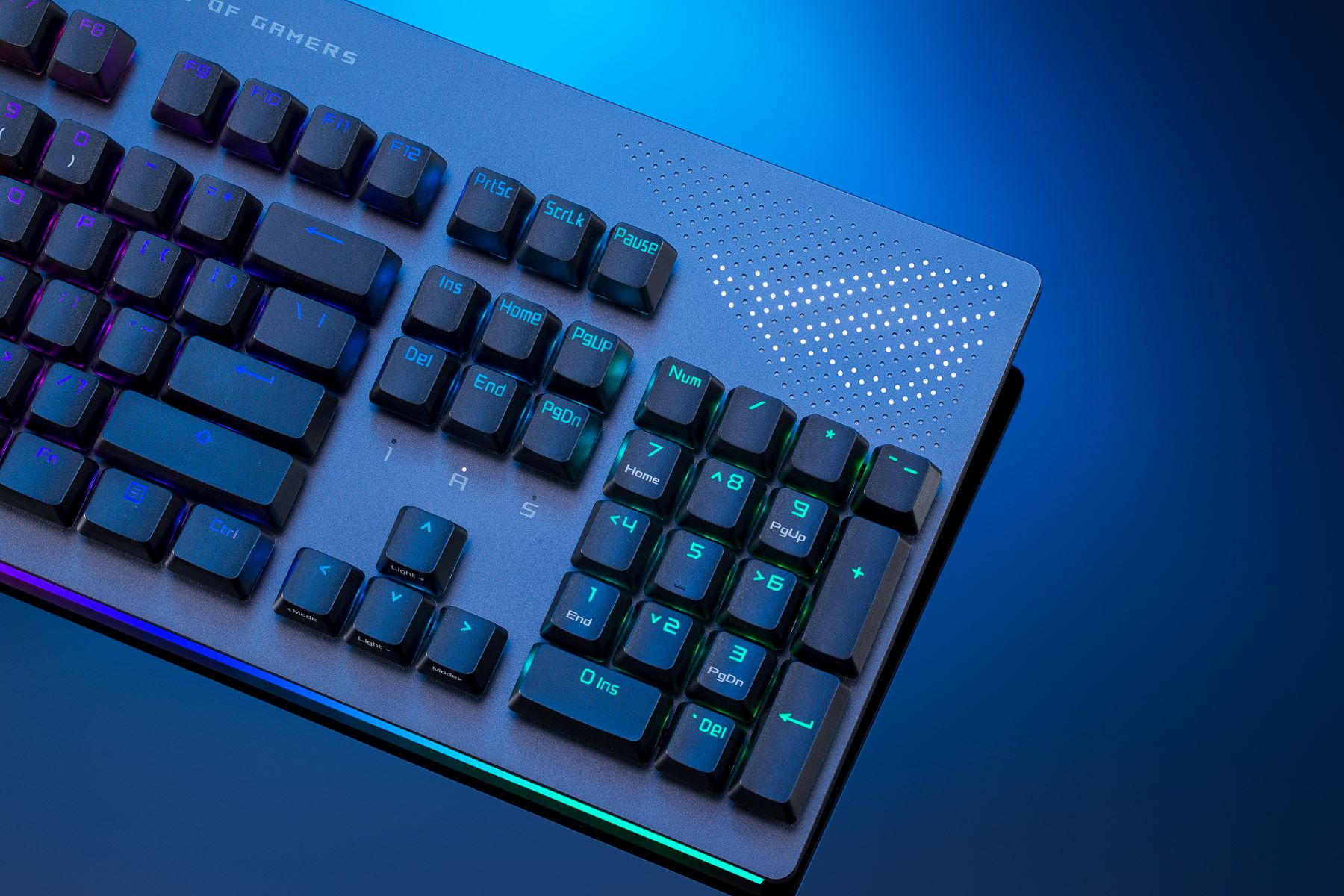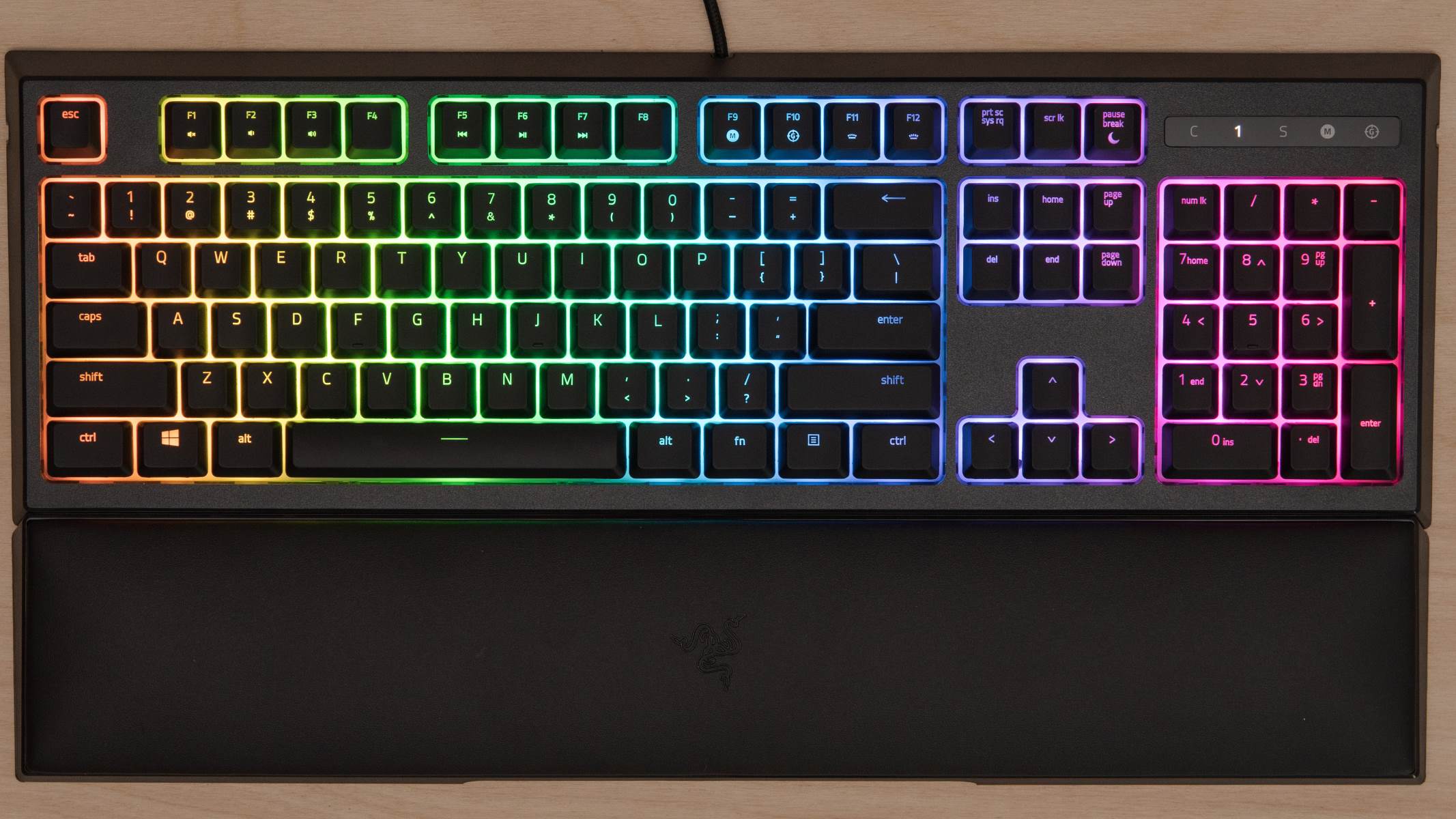Introduction
Welcome to the world of keyboards, where innovation and technology have revolutionized the typing experience. As the demand for high-performance peripherals continues to soar, keyboard manufacturers have introduced a new player in the arena: the optical mechanical keyboard. This cutting-edge input device combines the precision of optical technology with the tactile feedback of mechanical switches, offering users a unique and responsive typing experience.
The introduction of the optical mechanical keyboard represents a significant advancement in keyboard technology, catering to the needs of discerning users who seek a perfect blend of speed, accuracy, and comfort. In this article, we will delve into the intricacies of optical mechanical keyboards, exploring their functionality, advantages, and potential drawbacks to provide you with a comprehensive understanding of this innovative input device.
As we embark on this exploration, we will unravel the inner workings of optical mechanical keyboards, shedding light on the mechanisms that set them apart from traditional mechanical and membrane keyboards. Furthermore, we will examine the advantages and potential limitations of these keyboards, enabling you to make an informed decision when considering an upgrade to your typing arsenal.
Join us as we unravel the mysteries of optical mechanical keyboards, uncovering the technology that drives their performance and the benefits they bring to the table. Whether you are a seasoned enthusiast seeking the latest innovations or a curious newcomer eager to explore the world of advanced peripherals, this article will equip you with the knowledge to appreciate and evaluate the capabilities of optical mechanical keyboards. So, let's embark on this enlightening journey into the realm of optical mechanical keyboards and discover the remarkable fusion of optical precision and mechanical responsiveness.
What is an Optical Mechanical Keyboard?
An optical mechanical keyboard is a state-of-the-art input device that integrates optical and mechanical technologies to deliver a superior typing experience. Unlike traditional mechanical keyboards, which rely on physical metal contacts to register key presses, optical mechanical keyboards utilize light sensors to detect keystrokes, enhancing the speed and precision of input.
At the heart of an optical mechanical keyboard are optical switches, which replace the conventional mechanical switches found in traditional keyboards. These switches are equipped with light sensors that detect the interruption of an infrared beam when a key is pressed, triggering the keystroke registration process. This innovative mechanism eliminates the need for metal contacts, resulting in faster response times and greater durability.
Furthermore, optical mechanical keyboards retain the hallmark tactile feedback and audible click associated with mechanical switches, ensuring a satisfying typing experience for users who prefer the familiar feel of traditional mechanical keyboards. The tactile feedback, coupled with the swift actuation of optical switches, offers a compelling blend of responsiveness and comfort, making optical mechanical keyboards an appealing choice for both gamers and professionals.
Moreover, optical mechanical keyboards are renowned for their anti-ghosting and N-key rollover capabilities, allowing for simultaneous and accurate registration of multiple key presses. This feature is particularly advantageous in gaming scenarios, where rapid and precise inputs are crucial for maintaining a competitive edge.
With their innovative blend of optical and mechanical technologies, optical mechanical keyboards represent a significant leap forward in the evolution of input devices, catering to the demands of users who prioritize speed, accuracy, and durability in their peripherals. As we continue our exploration, we will delve deeper into the inner workings of optical mechanical keyboards, unraveling the mechanisms that underpin their exceptional performance and distinguishing them from traditional keyboard designs.
How Does an Optical Mechanical Keyboard Work?
Understanding the inner workings of an optical mechanical keyboard unveils the intricate synergy between optical and mechanical technologies that defines its exceptional performance. At the core of an optical mechanical keyboard are the optical switches, which employ light sensors to detect key presses, revolutionizing the traditional mechanical switch design.
When a key is pressed on an optical mechanical keyboard, the corresponding optical switch is actuated, causing an interruption in the infrared light beam within the switch. This interruption is swiftly detected by the light sensor, signaling the activation of the key press. The absence of physical metal contacts in the switch design eliminates debounce delay, resulting in rapid and precise keystroke registration.
Furthermore, optical switches in these keyboards are characterized by their swift actuation and reset points, allowing for rapid and effortless typing or gaming inputs. The tactile feedback and audible click associated with the actuation of optical switches provide users with a familiar and satisfying typing experience, reminiscent of traditional mechanical keyboards.
One of the key advantages of optical mechanical keyboards lies in their anti-ghosting and N-key rollover capabilities. The optical switch technology enables accurate detection of multiple simultaneous key presses, ensuring that every input is registered without interference or delay. This feature is particularly valuable in gaming scenarios, where complex key combinations and rapid inputs are common requirements.
Furthermore, the absence of physical metal contacts in optical switches contributes to their exceptional durability, as they are not susceptible to corrosion or wear over time. This durability, coupled with the swift actuation and precise registration of key presses, positions optical mechanical keyboards as reliable and resilient input devices suitable for prolonged and intensive usage.
As we unravel the technological marvel that powers optical mechanical keyboards, it becomes evident that their seamless integration of optical and mechanical elements sets them apart as a compelling choice for users seeking a responsive, durable, and high-performance typing solution.
Advantages of Optical Mechanical Keyboards
Optical mechanical keyboards offer a plethora of advantages that cater to the needs and preferences of discerning users, positioning them as a compelling choice for both gaming and professional applications. The following are some of the key advantages that set optical mechanical keyboards apart from their traditional counterparts:
- Swift and Precise Actuation: Optical switches in mechanical keyboards are renowned for their rapid actuation and reset points, allowing for swift and precise keystroke registration. This responsiveness is particularly beneficial in gaming scenarios, where split-second inputs can make a significant difference in performance.
- Enhanced Durability: The absence of physical metal contacts in optical switches contributes to their exceptional durability, as they are resistant to corrosion and wear. This durability ensures that optical mechanical keyboards can withstand prolonged and intensive usage, making them a reliable choice for users who demand long-lasting peripherals.
- Tactile Feedback and Audible Click: Optical mechanical keyboards retain the hallmark tactile feedback and audible click associated with mechanical switches, providing users with a satisfying typing experience. The familiar tactile sensation and audible feedback contribute to user comfort and confidence during typing or gaming sessions.
- Anti-Ghosting and N-Key Rollover: Optical mechanical keyboards are equipped with anti-ghosting and N-key rollover capabilities, enabling accurate detection of simultaneous key presses. This feature is invaluable in gaming scenarios, where complex key combinations and rapid inputs are prevalent, ensuring that every input is registered without interference or delay.
- Light-Based Actuation: The use of light sensors for key registration in optical mechanical keyboards eliminates debounce delay, resulting in instantaneous and accurate keystroke detection. This light-based actuation mechanism enhances the overall speed and precision of input, contributing to a seamless and responsive typing experience.
These advantages collectively position optical mechanical keyboards as a superior input device, offering a harmonious fusion of optical precision and mechanical responsiveness. Whether it’s for gaming, professional tasks, or general typing, the innovative features and performance capabilities of optical mechanical keyboards make them a compelling choice for users who seek a high-performance and durable typing solution.
Disadvantages of Optical Mechanical Keyboards
While optical mechanical keyboards boast impressive performance and innovative features, it is essential to acknowledge potential drawbacks that users may encounter when considering this advanced input device. Understanding the limitations of optical mechanical keyboards can provide users with a comprehensive perspective as they evaluate their suitability for specific preferences and requirements. The following are some notable disadvantages associated with optical mechanical keyboards:
- Higher Cost: Optical mechanical keyboards often come with a higher price tag compared to traditional membrane keyboards or even standard mechanical keyboards. The integration of optical technology and the precision engineering required for optical switches contribute to the elevated cost of these advanced input devices.
- Complexity of Repair: In the event of a malfunction or component failure, optical mechanical keyboards may pose challenges in terms of repair and maintenance. The intricate optical switch design and the integration of light sensors may require specialized expertise for troubleshooting and repair, potentially leading to higher repair costs and longer turnaround times.
- Limited Availability of Switch Options: Unlike traditional mechanical keyboards that offer a wide array of switch options with varying actuation forces and tactile feedback, the availability of optical switch options may be relatively limited. This constraint may limit users’ ability to customize the typing experience based on their specific preferences for actuation force and tactile response.
- Power Dependency: Optical mechanical keyboards rely on the uninterrupted supply of power to ensure the functionality of their light-based actuation mechanism. In the absence of power, such as during electrical outages or when using the keyboard with devices that have limited power capabilities, the optical switch functionality may be compromised, impacting the typing experience.
- Adaptation Period: Transitioning from traditional mechanical keyboards to optical mechanical keyboards may require users to adapt to the unique feel and response of optical switches. The tactile feedback and actuation characteristics of optical switches differ from those of traditional mechanical switches, necessitating an adaptation period for users to acclimate to the new typing experience.
While these disadvantages warrant consideration, it is important to note that the exceptional performance and innovative features of optical mechanical keyboards often outweigh these limitations for many users. By weighing the advantages and disadvantages, individuals can make informed decisions based on their specific preferences, budget, and requirements when selecting an input device that aligns with their needs.
Conclusion
As we conclude our exploration of optical mechanical keyboards, it becomes evident that these advanced input devices represent a significant leap forward in keyboard technology, offering a harmonious fusion of optical precision and mechanical responsiveness. The innovative integration of optical switches, light sensors, and tactile feedback has redefined the typing experience, catering to the needs of gamers, professionals, and enthusiasts alike.
Optical mechanical keyboards stand out as high-performance peripherals that deliver swift and precise actuation, enhanced durability, and advanced features such as anti-ghosting and N-key rollover. The tactile feedback and audible click associated with optical switches contribute to a satisfying and immersive typing experience, setting these keyboards apart as a compelling choice for users who demand exceptional performance and reliability.
While optical mechanical keyboards present certain limitations, such as higher cost and potential complexity of repair, their advantages far outweigh these drawbacks for many users. The seamless integration of optical and mechanical technologies has propelled these keyboards to the forefront of the peripheral market, offering a superior alternative to traditional mechanical and membrane keyboards.
Whether it’s for competitive gaming, professional tasks that demand precision and speed, or general typing needs, optical mechanical keyboards have established themselves as versatile and high-performance input devices that cater to a diverse range of user preferences. The remarkable marriage of optical and mechanical technologies within these keyboards has paved the way for a new era of typing experiences, setting a new standard for responsiveness, durability, and user satisfaction.
As users continue to seek peripherals that elevate their productivity, gaming performance, and overall typing enjoyment, optical mechanical keyboards stand as a testament to the relentless pursuit of innovation in the realm of input devices. With their exceptional capabilities and immersive typing experience, optical mechanical keyboards have undoubtedly earned their place as a formidable contender in the ever-evolving landscape of keyboard technology.







